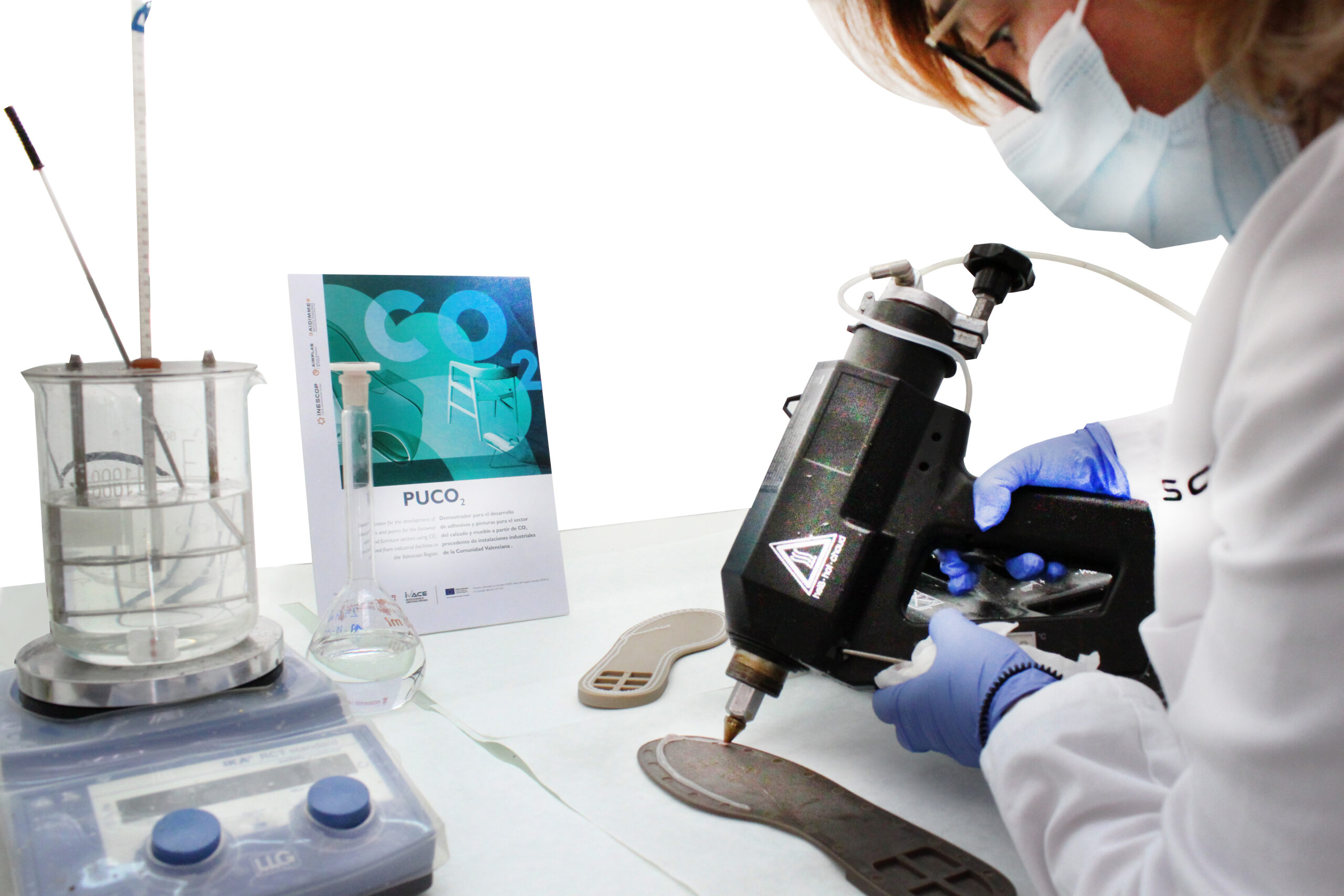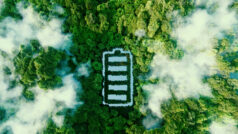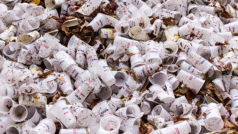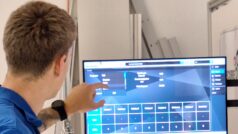AIDIMME, the Metalworking, Furniture, Wood, Packaging and Related Technological Institute; AIMPLAS, the Plastics Technology Centre; and INESCOP, the Footwear Technology Centre, with the support of the Valencian Institute for Business Competitiveness (IVACE), are doing research on converting CO2 from industrial emissions into high value-added chemical products with applications in the footwear and furniture industries.
Specifically, as part of the PUCO2 Project, they are developing systems for converting CO2 into isocyanate-free polyurethane and polyol-based polyurethane, and will then validate their use as paints, varnishes and adhesives in the footwear and furniture industries.
The first adhesive samples have been successfully applied to materials used to manufacture footwear and now are being tested on furniture.
The PUCO2 Project thus makes use of R&D to fight global warming caused by greenhouse gas emissions and aims to become a tool to guide and assist companies on how to implement CO2 capture technologies adapted to their needs and emissions.
CO2 accounts for more than 60% of global warming due to the high volume of emissions. According to data from the Valencian Ministry of Agriculture, Rural Development, Climate Emergency and Ecological Transition, in 2018, the industrial community of the Valencian Region emitted a total of 8.9 million tonnes of greenhouse gases into the atmosphere, which was 38% more than the amount permitted by the government.
The three technology centres working on the PUCO2 system have already collaborated with seventeen companies. The project aims to use emissions from industrial facilities to produce different polymers and provide a twofold benefit: the benefits for the environment, which are the most obvious, and economic benefit, thanks to the use of resources within the circular economy framework.
The results are also expected to be of interest to adhesive producers in related sectors, as well as the textile, automotive and toy industries.










